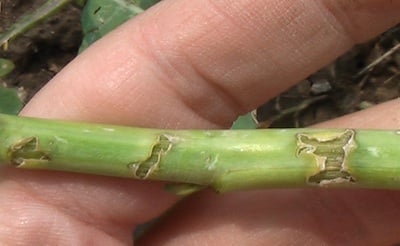
Canola hit with light to moderate hail at up to 20% flower may recover with only minimal to moderate yield loss. Plants will flower longer and compensate. If applying crop enhancement products such as fertilizer and micronutrient blends on hail-damaged crops, keep in mind that there is very little research available on the efficacy of such products under these extreme conditions. Leave appropriate check strips in order to make an accurate yield comparison at harvest. Also, before trying any treatment on hail damaged fields, give the crop time to recover. It may recover nicely on its own, likely with later maturity but with a large percentage of its yield potential intact. Or, if the growing points or most of the leaves are stripped off, the plants may not recover sufficiently to warrant further investment in the crop. Allowing some time for regrowth will allow a better estimation of the remaining yield potential, and hence more informed decisions about managing the crop going forward.
Hail and disease. Canola that flowers longer in response to hail may be at increased risk of sclerotinia. Hail damage also allows a point of entry for diseases such as alternaria black spot and blackleg. Note that in the case of late stage blackleg infection, the yield impact will not be huge. Fungicides may help reduce the development of diseases but make sure the remaining yield potential warrants protection and conditions remain conducive to disease development. Also consider the possible impact of delayed maturity, as fall frost damage could negate the potential benefits of the fungicide application.
